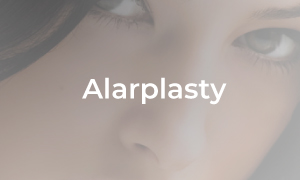Secondary Rhinoplasty
Secondary Rhinoplasty
Secondary rhinoplasty, or revision rhinoplasty, refers to a nose surgery performed after a previous rhinoplasty. The main reasons to undergo the repeated nose job is the problems or unsatisfactory results from the previous rhinoplasty, or the desire of the patient to seek further modifications of the nose’s shape and function. There are various reasons for secondary rhinoplasty. The common examples are:
-
-
-
Implant from the previous rhinoplasty causes excessive pressure in the nose, leading to impending perforation or actual perforation of the skin around the nasal tip.
-
In some cases, the implant may elicit excessive scar, causing capsular contracture within the nose, leading to implant visibility, deviation, rotation of the nasal tip, and alteration of the nose shape.
-
Nose deformity caused by the injudicious use of threads or injection of fillers. In many cases, the threads and fillers are of unknown origin and unknown materials, and performed by an unlicensed practitioner.
-
Any aesthetic or functional problem of the nose that was not adequately corrected or made worse from the previous rhinoplasty. Examples are the nose’s artificial appearance, asymmetry, unsatisfactory tip projection, and air airway obstruction.
-
-
Secondary rhinoplasty can be performed through a closed or open rhinoplasty. If significant structural changes are required, an open rhinoplasty approach is preferred. On the other hand, minor corrections can be performed via a closed rhinoplasty. Whether to use closed or open rhinoplasty depends on the nose’s existing condition and the severity of the problem. Each technique has its pros and cons. Cartilage grafts are often necessary for secondary rhinoplasty to correct the underlying problems and create the restore the nose to the desired shape.
Secondary rhinoplasty is often more complicated than the previous primary rhinoplasty. However, with proper assessment and the use of the correct techniques, secondary procedures can be successful. Nevertheless, the patient needs to understand the nose’s actual condition. The goals, limitations, and expectations of the secondary rhinoplasty need to be discussed and understood.
Preparation
-
-
-
Inform the doctor of any pre-existing medical conditions and drug allergy. All medical conditions must be treated and stabilized before surgery.
-
Stop smoking at least one week before surgery. Smoking is harmful to wound healing and increases the risks of other post-operation complications.
-
Stop the following medications and supplements from one week before surgery until one week after surgery.
-
All supplements containing vitamin E, ginseng, ginkgo, garlic, fish oil, and other ingredients that increase bleeding during the procedure. Other supplements, traditional medicine, and herbs, in which ingredients are unknown, have to stop as well.
-
Medicine that increases bleeding during the procedure such as aspirin, NSAIDs, and warfarin. However, you may need to consult your physician who prescribed the medication before you stop them.
-
-
On the day of surgery, wear simple and comfortable clothing and do not wear any makeup. Do not wear any jewelry and metal objects on the face and body.
-
Don’t wear glasses on the day of surgery.
-
-
Surgery
Duration: 2-3 hours
Anaesthesia: Local anaesthesia
Hospitalization: Not required.
Recovery*: Back to work in 3-7 days, light exercise after 2 weeks, heavy exercise after 3-4 weeks.
* The actual speed of recovery may vary from person to person.
Surgery Technique*:
An open rhinoplasty or closed rhinoplasty approach may be used, even though open rhinoplasty is preferred in the more complex and complicated cases..
Post-operative Care**
-
-
-
What to expect: Swelling usually peaks on the second to third day after surgery and will gradually subside after that. Post-operative pain is usually minimal.
-
General care:
-
Apply the cold pack in the first 3 days. Elevate the head during sleep to reduce swelling.
-
Avoid smoking for at least one month. Smoking increases the risk of wound complications.
-
Good rest and adequate sleep are helpful for a speedy recovery.
-
Avoid applying pressure on the nose. Sleep on the back and do not sleep on one side to avoid pressure on the nose.
-
Be relaxed and calm. Contact the clinic if there are any queries.
-
-
Medicine: Finish the oral antibiotics as prescribed. Take the painkiller as when necessary.
-
Wound care: Clean the wound with a clean cotton tip soaked with sterile water/saline. Apply antibiotic ointment. No dressings are required. Remove the adhesive strips applied on the nose after 3 days.
-
Physical activity: Avoid heavy physical activity and exercise for at least one month.
-
Follow-up: Come back one week after surgery for suture removal and review. If the cartilage graft is taken from the ear, the compression dressing on the ear is to be removed after one week.
-
Emergency: If there is heavy bleeding, a rapid increase in swelling or severe pain, contact the clinic/doctor for advice immediately.
-
-
** The instructions in this list are only for general guidance. If you have any specific queries or concerns during the post-operative recovery, please contact the clinic for further advice.








